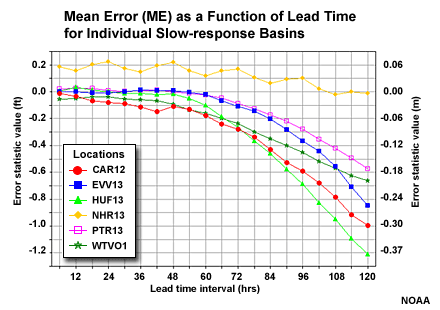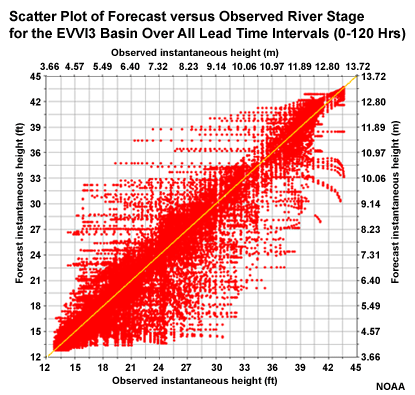2.0 IVP Case Study: OHRFC
The Interactive Verification Program (IVP) is used by the Ohio RFC (OHRFC) to evaluate deterministic hydrologic forecast performance. The study covers the 25-month period from 01 August 2007 through 31 August 2009. The data presented in this case study will help us demonstrate how to use verification to answer important questions about hydrologic forecast performance. In this particular case it is used to evaluate the effect of QPF on that performance.


When evaluating how QPF affects hydrologic forecast performance, related questions arise. In this case study we will demonstrate how to answer these questions as we address the main question of QPF impact. These questions include: 1) Are the basin data aggregated in a meaningful way? Or in other words, do the basin groups really contain basins with similar characteristics? 2) How do the errors and biases differ depending on QPF input and forecast modifications? 3) How well-correlated are the hydrologic forecasts and observations? 4) How are QPF-influenced hydrologic forecasts impacted by lead time? 5) Are erroneous forecasts skillful? 6) What are the primary sources of error?

This study does not look at different thresholds of QPF amount. It only looks at the performance of the hydrologic forecast when QPF is used as input into the hydrologic models versus the hydrologic forecast without any QPF. QPF input is a mixture of both zero and non-zero amounts, but when QPF is not used it is the equivalent of zero QPF over all lead times.
